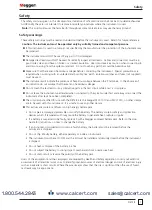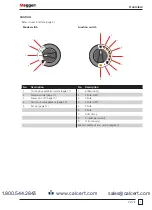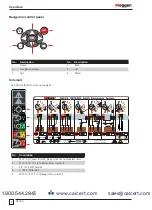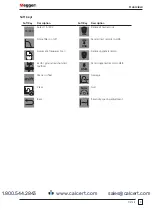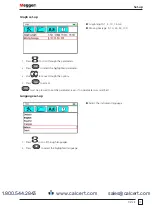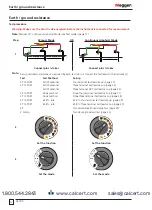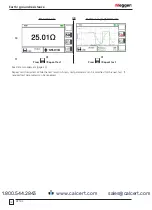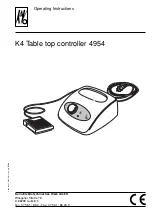
DET2/3
1
Safety
Safety
The safety warnings given in this document are indicative of safe practice and shall not be considered exhaustive.
Additionally, they are not intended to replace local safety procedures where the instrument is used.
Note:
This User Guide uses the term ‘earth’ throughout some market areas may use the term ‘ground’.
Safety warnings
These safety warnings must be read and understood before the instrument is used. Retain for future reference.
Caution: The instrument must be operated only by suitably trained and competent persons.
If this instrument is used in a manner not specified by the manufacturer the protection of the instrument may
be impaired.
The instrument must NOT be used if any part of it is damaged.
Damaged test leads must NOT be used. Periodically inspect all test leads. Cables and connectors must be in
good order, clean and have no broken or cracked insulation. Users must exercise caution when connecting to
and disconnecting from the system under test. Do not touch any part that could be hazardous live.
Make sure that there are no hazardous voltages before connecting the instrument. Special precautions are
required when working with an untested and possibly 'live' earth. Isolation switches and fuses (not supplied)
must be used.
The instrument will indicate the presence of hazardous voltage between the P terminals. In the absence of
an indication do not assume that there are no hazardous voltages.
Do not touch the test leads or any conductive parts in the test circuit while a test is in progress.
Do not leave the instrument unattended when connected to the system under test and always disconnect the
instrument after tests have been completed.
The only clamps certified for use with the DET2/3 are the Megger MCC1010 and MVC1010, no other clamps
are to be used with this instrument. It is unsafe to use any other clamps.
This instrument contains a lithium-ion high energy battery pack.
Do not pierce, damage, disassemble or modify the battery. The battery contains safety and protection
devices, which if tampered with may cause the battery to generate heat, rupture or ignite.
If a battery is suspected to be faulty, replace it with a Megger approved battery pack. Refer to the User
Guide for instructions on how to change the battery.
If an instrument is suspected to contain a faulty battery, the battery must be removed before the
instrument is shipped.
Do not ship a faulty battery, either separately or inside an instrument.
The instrument must be set to OFF and the lid must be installed and securely closed before the instrument
is shipped.
Do not heat or dispose of the battery in a fire.
Do not subject the battery to strong impact, mechanical shock or excessive heat.
Do not short-circuit or reverse the polarity of the battery pack.
Users of this equipment and their employers are required by Health and Safety Legislation to carry out valid risk
assessments of all electrical work so as to identify potential sources of electrical danger and risk of electrical injury
such as inadvertent short circuits. Where the assessments show that the risk is significant then the use of fused
test leads may be appropriate.
www.calcert.com
sales@calcert.com
1.800.544.2843
0
5
10
15
20
25
30





